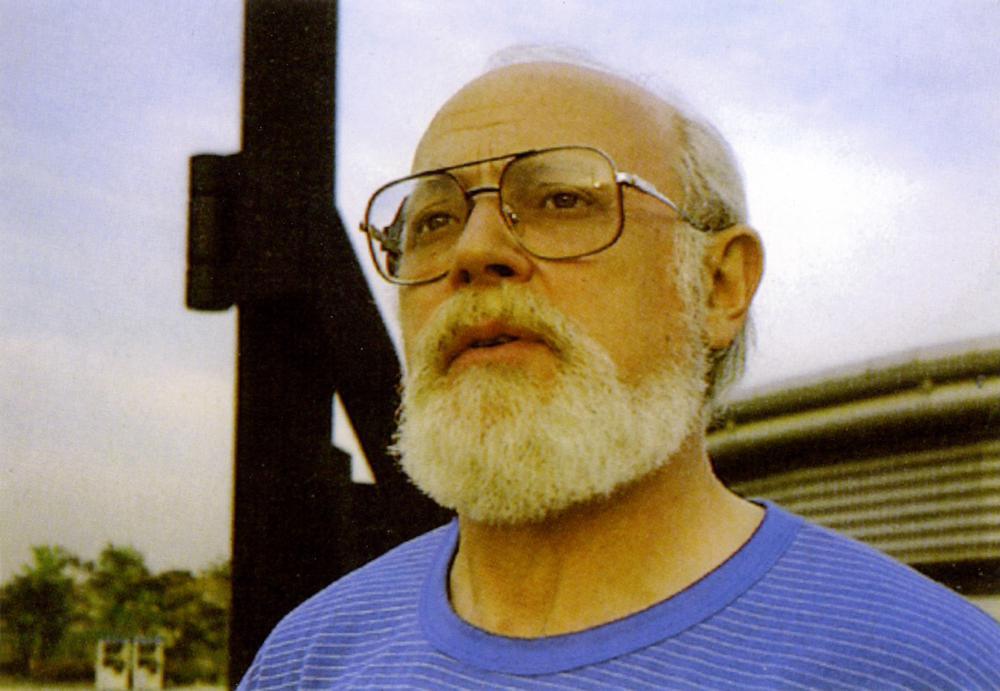The Canadian art world lost a major contributor this week with the passing of Sorel Etrog, a Toronto-based artist who represented Canada at the 1966 Venice Biennale and designed Canada’s iconic Genie awards statue.
To many, Etrog was Canada’s pre-eminent Modernist sculptor, typifying a 1960s moment when Modernist sculpture was breaking through to wider acclaim in galleries and public spaces worldwide.
“I am truly saddened to learn that Sorel Etrog, a great Canadian artist, has passed away,” Art Gallery of Ontario director Matthew Teitelbaum said in a gallery statement. In 2013, the AGO produced a hometown survey of Etrog’s work, which Teitelbaum indicated was that of “a sculptor, painter, draughtsman, filmmaker and writer.”
“Sorel was one of the most multifaceted artists of his generation,” Teitelbaum continued. “His deep and ongoing search for ways for us all to connect will be visible for generations to come in Toronto, the city he loved, where several public installations of his sculptures have left an indelible mark on the urban landscape and our public imagination.”
Indeed, Etrog’s public artworks can be found in many locations across Canada. This includes his Sunlife on University Avenue in Toronto, The King and Queen at the Windsor Sculpture Park, Survivors are Not Heroes outside of Hart House at the University of Toronto, and Flight on Wellington Avenue in Ottawa. (The latter sculpture was originally designed for the Canada Pavilion at Expo 67.)
The Toronto Star has reported that more than 100 pieces of Etrog’s art are also due to be featured as of early 2015 in a new sculpture garden at Mount Sinai Hospital in Toronto, and his sculpture Standing Figure (Madonna) is also currently on view in the AGO’s Frank P. Wood Gallery.
According to the website of Toronto dealer Christopher Cutts, Etrog was born in 1933, leaving his native Romania for Israel in 1950 where he studied at the Tel Aviv Art Institute. He came to North America when he was awarded a scholarship to study at the Brooklyn Museum of Art in New York. In 1959, he had his first Canadian solo exhibition at Gallery Moos in Toronto, which was his dealer for several decades. In 1963, Etrog left New York for Toronto and later became a Canadian citizen.
According to Cutts, much of Etrog’s gaining of a foothold in Canada had to do with the support and interest of Toronto collectors Sam and Ayala Zacks, who acquired Etrog’s work during his New York student days. At one point, Etrog’s studio was in the Tip Top Tailors building on Toronto’s lakeshore, a structure which is now a condominium.
“My memories of Sorel are great,” Cutts says, conveying remembrances of a hardworking, vital and charming artist who spent the days sketching when they were both in Berlin for an art fair some 15 years ago. “He was fantastic, full of life,” Cutts recalls.
Over the years, Etrog’s work was included in group exhibitions at the National Gallery of Canada, the Carnegie Museum, the Museum of Modern Art and the Guggenheim Museum, among other significant institutions, and it was collected by many of same.
Etrog also wrote plays, poetry and non-fiction, as well as created book illustrations for Eugene Ionesco and Samuel Beckett in the late 1960s. He also collaborated with Marshall McLuhan on the publication Spiral.
And though Etrog may, by the wider public, be best remembered for large, heavy, abstract bronze sculptures in public spaces, Cutts recalls that in the latter part of his career he “kind of did a full circle.” A 2000 show of new work at Cutts’s gallery featured smaller, painted wall constructions of the kind Sam Zacks purchased in the early 1950s. These late pieces also—as very little of his work did—seemed to gesture towards some of his Holocaust-survivor experiences, Cutts notes.
“He was one of our greatest, even if he was often under-celebrated,” Cutts says.









